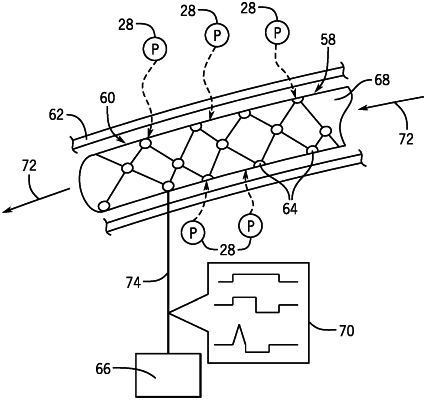| CPC A61N 1/056 (2013.01) [A61N 1/0456 (2013.01); A61N 1/0476 (2013.01); A61N 1/0484 (2013.01); A61N 1/0492 (2013.01); A61N 1/0536 (2013.01); A61N 1/0551 (2013.01); A61N 1/36025 (2013.01); A61N 1/36034 (2017.08); A61N 1/36053 (2013.01); A61N 1/36067 (2013.01); A61N 1/36082 (2013.01); A61N 1/36103 (2013.01); A61N 1/36132 (2013.01); A61N 1/36146 (2013.01); A61N 1/36175 (2013.01); A61N 1/37516 (2017.08)] | 14 Claims |

|
1. A method for treating a human having a proteinopathy by inducing glymphatic clearance, comprising:
implanting at a single location a tubular stent supporting at least one electrode within a blood vessel of the human having the proteinopathy wherein the tubular stent includes a tube of insulation material permitting blood to flow therethrough and surrounded by the at least one electrode positioned on an exterior of the tube; and
administering electrical stimulation comprised of electrical pulses to the at least one electrode of the tubular stent at a predetermined temporal pattern operable to direct current outward toward the inner walls of the blood vessel to attract oppositely charged local proteins to the at least one electrode of the tubular stent and create an osmotic gradient to clear the proteins by para-venous efflux and increase glymphatic clearance characterized by increased cerebrospinal fluid flow from the perivascular space into the parenchyma.
|